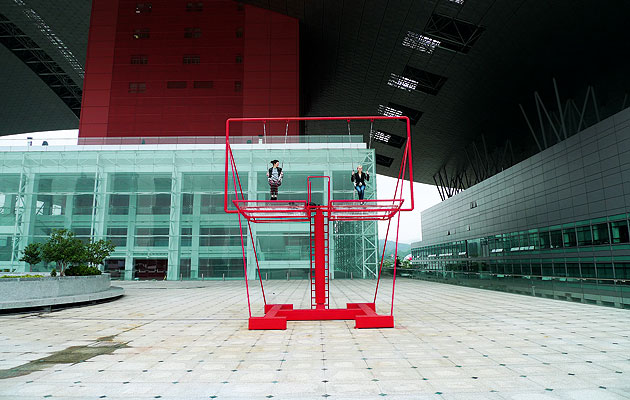|
Creature by Triptyque |
||
|
Architects get playful and run amok in China’s precocious, heartless supercity – but how much can they do to overcome its alienating scale, asks Justin McGuirk Shenzhen is a phenomenal city. Banham’s quip about LA – “a city seventy miles square but rarely seventy years deep” – is doubly true of Shenzhen: 150 square miles, but rarely 30 years deep. Yes, an instant city of 14 million people and thus, as I say, phenomenal. But it is also a city absolutely without charm. Walking its streets, for the most part, is a joyless experience. Let’s make an exception for the kitschy Window on the World theme park, with its own Eiffel Tower and miniature pyramids, because that’s entertaining. Otherwise, Shenzhen recalls railed highways and oddly shaped skyscrapers set in vast, desolate plazas. Somehow the whole place is designed beyond the human scale, to be as alienating as possible. Ironically, understanding that Shenzhen is a city without qualities is exactly what made last December’s Shenzhen and Hong Kong Biennale a success. Where the two previous SZHK biennials housed sprawling exhibitions in an isolated former factory complex, 2009’s curator, Ou Ning, decided to try and engage with this impossible city. Under the theme of City Mobilisation, he set out to inject a little fun into the humourless streetscape and enlisted a generation of emerging architects to help. There was, as usual, a central exhibition, only this time it was much smaller and held in the basement of the Shenzhen Civic Centre, one of the most extraordinary buildings in China. It is essentially just a massive, primary-coloured roof shaped like an arched eyebrow but without the irony, a roof that serves no purpose other than to offer up a symbol of the city. Around it, needless to say, is a plaza so grandiosely barren that any humans flecked across it just look wrong. So it was the perfect place to install a public sculpture of a straw head on a bamboo tripod that looked like a giant voodoo doll of Rod Stewart. Designed by the French-Brazilian practice Triptyqye, Creature not only animated this dead public space but evoked a primitive, ritualistic attempt to communicate with the outsized scale of this city. Not far away, situated directly under that comic roof, was an even more explicit invitation to play. The Paris-based architect Didier Fiuza Faustino had designed a billboard with two swings instead of an advertising hoarding. The commodity here was your own thrill at being able to watch the city swinging back and forth from this unusual eyrie. There were fine works in the exhibition below ground. Two in particular stood out. LA-based Ball Nogues’ dragon-like hanging structure of red and gold American Apparel pants and T-shirts suggested, in the world capital of cheap manufacturing, that the disposable commodity can take on a devotional beauty. Meanwhile Londoners DRDH worked with schoolchildren at a porcelain factory to create a miniature city. Each child had to create a house, and naturally, this being Shenzhen, each one moulded a tower. The question is, who is all this for? Is the biennale just meant to foster the city’s prestige among the foreign participants and press? Two days after the opening, the show was all but empty, and there is no sense that the city’s own gargantuan populace has any time for it. This is why Ou Ning’s strategy of scattering these random urban interventions around the city made sense. It turns out that his rhetoric about questioning what a biennial is for – a question often asked of biennials – wasn’t just rhetoric. As a citizen of Shenzhen, finding an unexpected installation on your way home is an invitation to engage, to be curious, to interact. And around the city there were random cornfields, bamboo pavilions, pink dinosaur footprints, caged trampolines, taxi drivers offering free rides with storytelling. Plenty of opportunities to stop and take a break from the everyday reality of your workaholic home town.
Ball Nogues’ Built to Wear installation |
Words Justin McGuirk |
|
|
||
|
Double Happiness by Didier Fiuza Faustino |
||





















